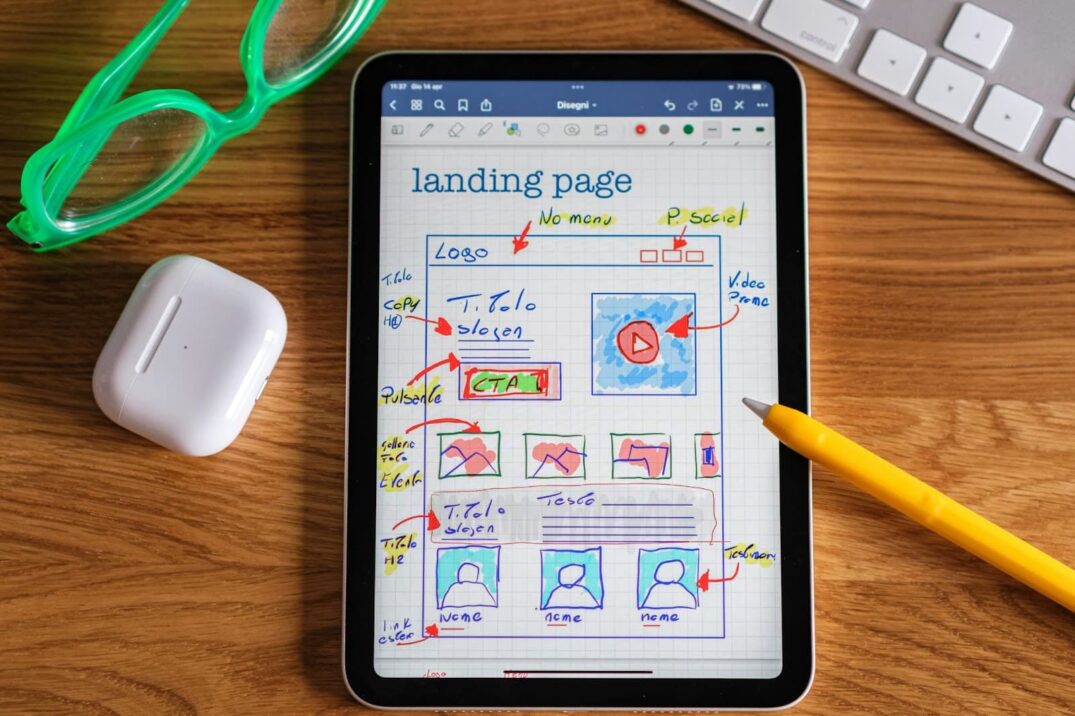What makes a website truly stand out? Is it the colors, the layout, or how easily users can navigate it? The truth is, a well-designed website is not just about aesthetics—it’s about usability, efficiency, and user satisfaction. This is where UX (User Experience) and UI (User Interface) come into play. A website with stunning visuals but poor functionality is like a beautiful car that won’t start; it might look great, but it won’t get you anywhere.
UX/UI design is the backbone of successful website development. Whether you’re building a small business site, an e-commerce platform, or a personal blog, understanding and implementing UX/UI best practices can be the difference between users staying engaged or leaving within seconds. Let’s explore why UX/UI is crucial and the best practices that can elevate any website.
Understanding UX vs. UI: What’s the Difference?
Before diving into best practices, it’s essential to understand the distinction between UX and UI. While they are often used interchangeably, they serve different roles in web development:
- UX (User Experience): Focuses on the overall feel of the website and how easily users can interact with it. It involves research, user testing, and optimizing usability.
- UI (User Interface): Deals with the visual aspects of the website—colors, typography, buttons, and layouts that make the user experience intuitive and aesthetically pleasing.
UX vs. UI – Key Differences
| Aspect | UX (User Experience) | UI (User Interface) |
|---|---|---|
| Focus | Usability, functionality, and ease of navigation | Visual design, branding, and interactive elements |
| Goal | Enhance user satisfaction and efficiency | Create an appealing and intuitive design |
| Elements | Wireframes, user research, information architecture | Colors, typography, icons, buttons, and images |
| Impact | Affects how users feel while navigating the site | Affects how users visually perceive the site |
| Example | A checkout process that reduces cart abandonment | A beautifully designed “Buy Now” button that stands out |
Both UX and UI must work together seamlessly. A website with great UX but poor UI might be functional but unattractive, while a website with excellent UI but bad UX might look nice but be frustrating to use.
Best Practices for UX/UI in Website Development
Creating a website that balances UX and UI requires strategic planning and execution. Here are some best practices to ensure a smooth, visually appealing, and user-friendly experience:

- Prioritize User-Centered Design – A website should be designed for its users, not just for aesthetics. Conduct user research to understand their needs and pain points.
- Keep Navigation Simple – Users should find what they need within seconds. Avoid cluttered menus and ensure clear labeling.
- Make It Mobile-Friendly – With mobile devices driving the majority of web traffic, responsive design is a must. The site should function seamlessly across all screen sizes.
- Optimize Page Speed – Slow-loading pages drive users away. Compress images, use caching, and minimize code to keep the site fast.
- Use Consistent Branding – Fonts, colors, and design elements should align with your brand identity, creating a cohesive look.
- Ensure Readability – Avoid overly small text, poor contrast, or fonts that are difficult to read. Content should be scannable with proper headings and spacing.
- Enhance Visual Hierarchy – Guide users’ attention to important elements, such as CTAs (Call-to-Action) and key content, using size, color, and placement.
- Provide Feedback for User Actions – Buttons should change when clicked, forms should confirm submissions, and errors should display clear messages.
- Test and Iterate – Regularly conduct usability tests, gather feedback, and refine the design based on real user interactions.
The goal of these best practices is to create an intuitive and visually pleasing website that users enjoy navigating. After all, a website should be an effortless experience, not a puzzle that visitors struggle to solve.
The Future of UX/UI: Continuous Evolution and Adaptation
As technology evolves, so do user expectations. With AI-driven personalization, voice search, and interactive web experiences becoming more common, UX/UI design must adapt to these changes. The future of web development will likely see more dynamic interfaces, hyper-personalized user journeys, and even more emphasis on accessibility and inclusivity.
A well-designed website isn’t just a digital space—it’s an experience. The better the UX/UI, the more engaging and effective the website will be. As designers and developers, the challenge is to continuously innovate, test, and refine the user experience to meet the ever-changing needs of the digital world.
So, the next time you land on a website, take a moment to notice—does it feel intuitive and engaging, or does it frustrate you? That’s the power of UX/UI in action.
FAQ
Why do some beautifully designed websites still fail to attract users?
Because if a website is not user-friendly or intuitive, visitors will leave regardless of how visually stunning it is.
What is the biggest mistake in UX/UI design that frustrates users the most?
Confusing navigation and unclear CTAs, as they make it difficult for users to find what they need.
How can UX/UI impact a website’s conversion rate?
A well-optimized UX/UI makes interactions seamless, reduces friction in the user journey, and ultimately leads to higher engagement and conversions.


